In the 1950s, Los Angeles was a city undergoing significant transformation. Following the Second World War, it was evolving from a relatively small town to a sprawling metropolis, known as the city of the future.
Table of Contents
The post-war era saw the rise of automobile culture and the rapid expansion of highways, which gradually overshadowed the prominence of trains as a preferred mode of transportation.
The city’s economy was strong, with a base in farming, oil, tourism, real estate, and movies. Its motion picture industry made the city world-famous.
The music scene in Los Angeles was also flourishing during this time. Capitol Records was launched in Los Angeles in 1942 and became a serious rival to the major New York City-based companies.
Several independent labels sprang up to record local artists and meet the tastes of the city’s rapidly expanding population during the 1940s.
These labels found the teen market almost by accident—simply by being there and having the rhythm-and-blues and rock-and-roll music that white kids suddenly wanted. This period marked the beginning of Los Angeles’ emergence as a major center for the music industry.
Walt Disney Alone With His Thoughts at Main Street U.S.A., Moments Before Grand Opening of Disneyland (1955)

This vintage photograph gives us a rare glimpse into that very moment for Walt Disney.
Sitting alone on a park bench, Walt looks deep in thought as he gazes at the newly built Main Street U.S.A. behind him.
The iconic buildings with their fancy designs and bright colors seem to have jumped right out of a storybook.
It’s the start of something amazing that Walt has spent years imagining and working toward. In just a little while, the gates will open and Walt’s creation, the first-ever Disneyland, will finally welcome guests.
Can you picture the mix of excitement, nerves, and pride he must have felt?
All his bold ideas about building “The Happiest Place on Earth” were right there in front of him in real life.
Stahl House, Los Angeles (1959)
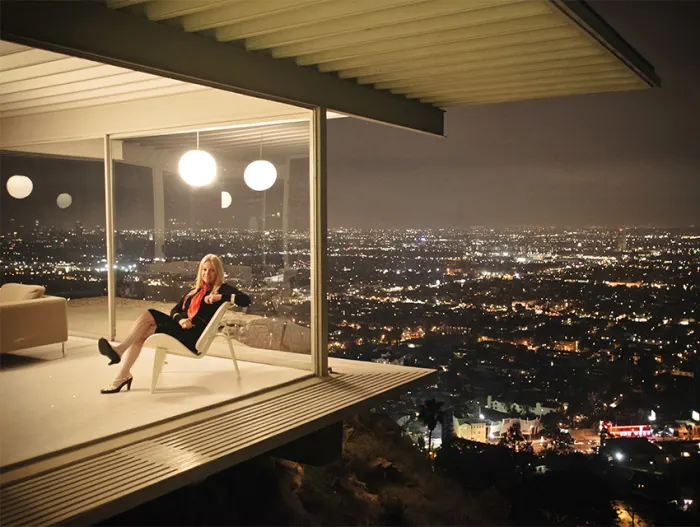
The Stahl House, also known as Case Study House #22, is a true gem of midcentury modern architecture.
Designed by Pierre Koenig in 1959, this iconic home sits on a cliff in Los Angeles, offering a stunning view of the city below.
It’s not just the view that makes the Stahl House special; it’s also its sleek design and the way it perfectly captures the spirit of its era.
The house’s open floor plan, glass walls, and minimalist style were revolutionary at the time and continue to influence architects today. What’s really cool about the Stahl House is its story.
Clarence “Buck” Stahl had the vision for this house and, together with his wife Carlotta, found the perfect architect in Pierre Koenig to bring it to life.
Despite many architects saying it couldn’t be done, Koenig succeeded, and the house became part of the famous Case Study series, which showcased the best of modernist architecture in Southern California.
The Stahl House stands out as the most famous of these homes, a symbol of innovation and the future of design. It’s a place where history and beauty meet, making it a must-see for anyone interested in architecture.
Los Angeles River Bed Drag Racing
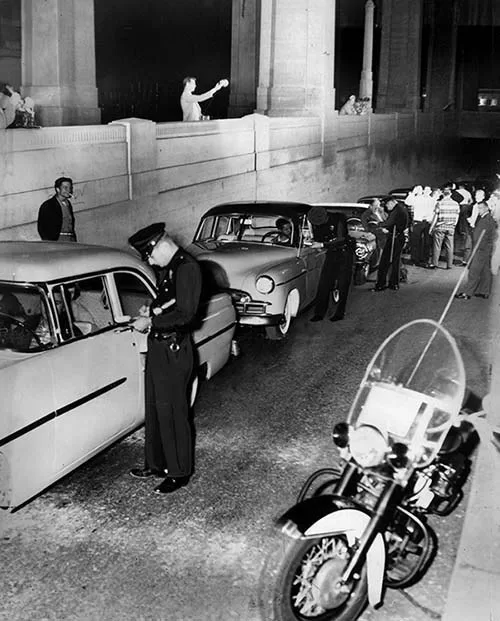
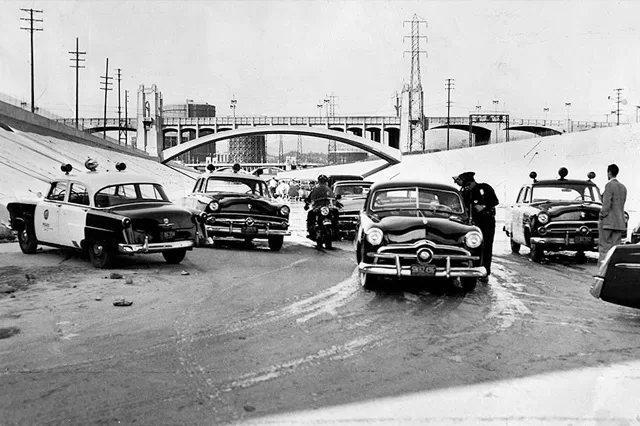
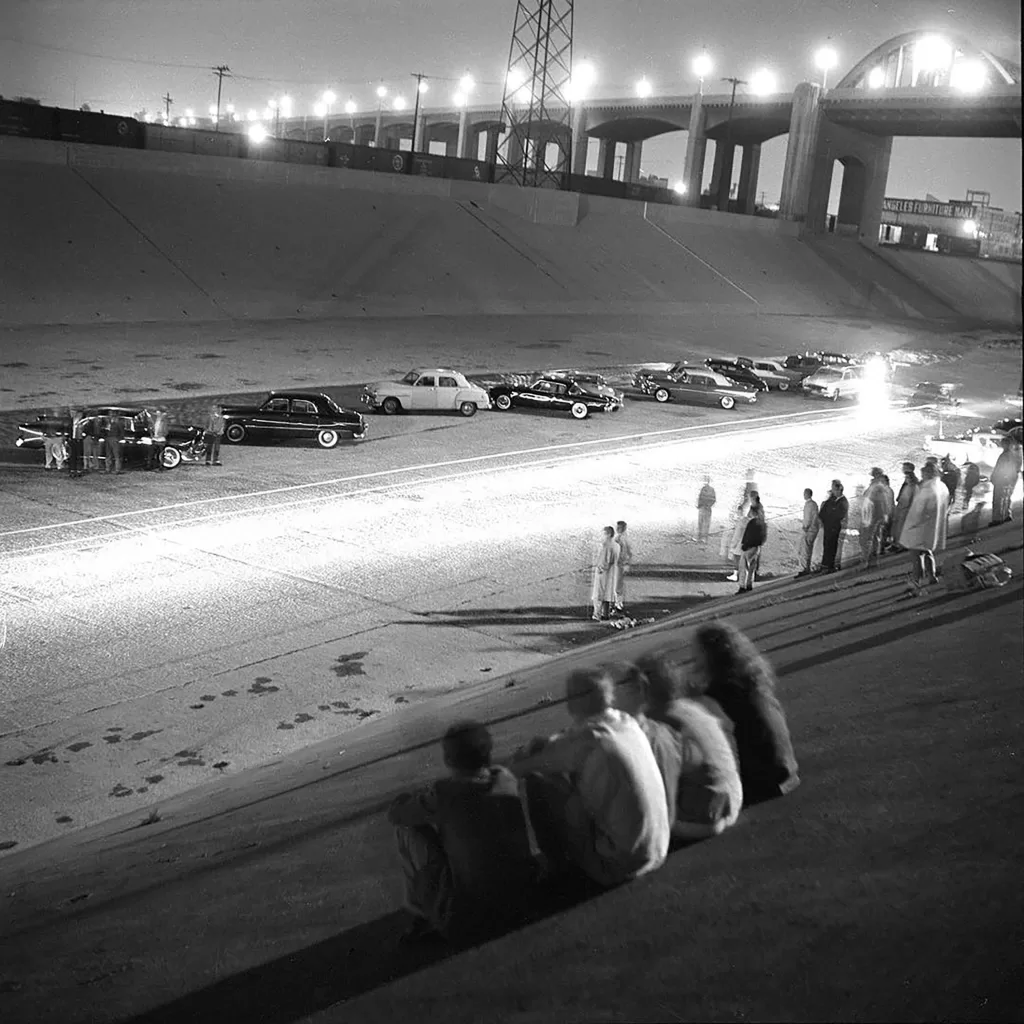
In the 1950s, the dry concrete channels of the Los Angeles River became an unlikely venue for underground drag racing.
As the city’s urban sprawl expanded, teenage car enthusiasts sought secluded spots to test the limits of their souped-up hot rods, and the river beds provided the perfect setting. The long, straight stretches of concrete along the L.A. River system offered ideal makeshift dragstrips.
Teenagers from across the city would converge in these semi-secluded areas, lining up their customized jalopies to race against rivals and friends alike.
The roar of engines and the scent of burning rubber filled the air as these young rebels pursued their need for speed. However, this illegal activity did not go unnoticed by law enforcement.
In March 1955, the Los Angeles Times reported that police had rounded up more than 150 teenagers who had marked off a quarter-mile racing strip near the 6th Street Bridge.
While no arrests were made, the incident highlighted the growing popularity of these unauthorized drag races along the river beds. Despite occasional police crackdowns, the river bed racing scene persisted for years.
Many of the greatest racers of the era cut their teeth on these improvised tracks, chasing their dreams of running the fastest car and finding a sense of freedom in the thrill of illicit street racing.
The concrete channels of the L.A. River became a hallowed ground for a generation of automotive enthusiasts, forever etching their mark on the city’s car culture history.
Joan Bradshaw Poses by the Capitol Records Building
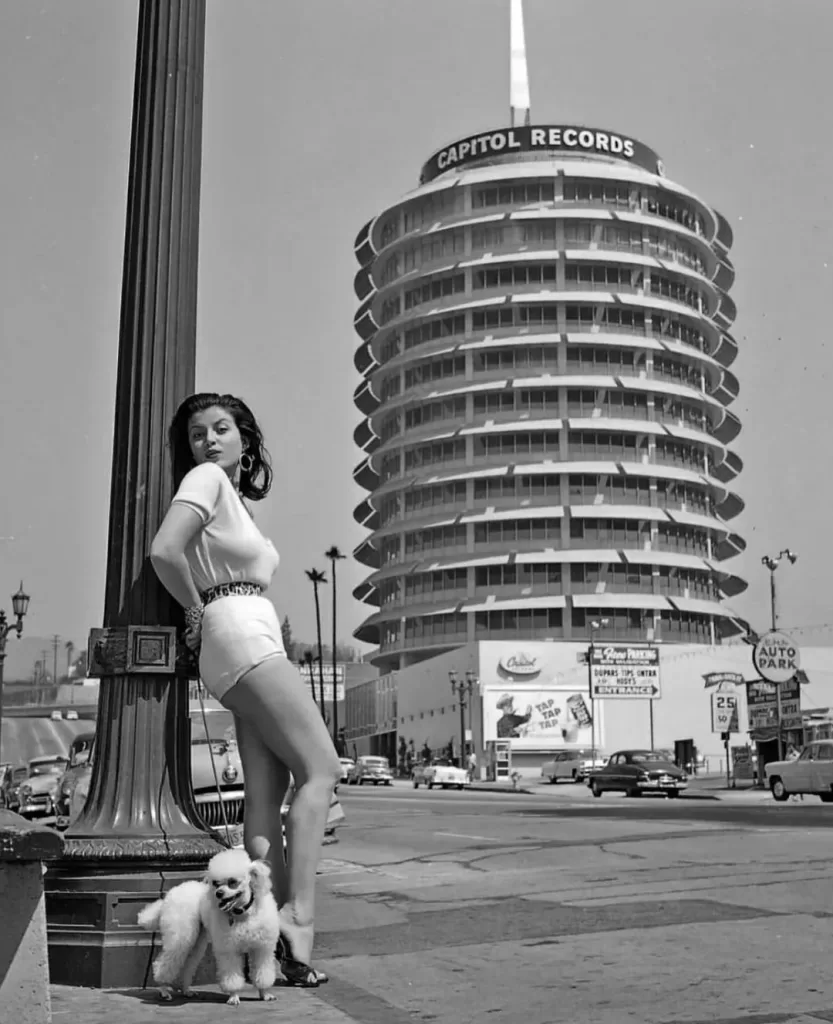
Model, actress and future film producer Joan Bradshaw poses by the Capitol Records building on September 8, 1957 in Los Angeles, California.
The Capitol Records Building, also known as the Capitol Records Tower, is not just a building, but a symbol of music history and an architectural marvel.
This 13-story tower, located in Hollywood, California, is a testament to the evolution of music and the artists who made it come alive.
Designed by Louis Naidorf of Welton Becket Associates, it stands as one of the city’s landmarks, and its unique circular design has led it to be described as the “world’s first circular office building”. Construction of the Capitol Records Building began soon after British music company EMI acquired Capitol Records in 1955, and was completed in April 1956.
The building is home to the consolidation of Capitol Records’ West Coast operations and houses the recording studios and echo chambers of Capitol Studios.
It has been affectionately known as “The House That Nat Built” due to the vast numbers of records and amounts of merchandise Nat King Cole sold for the company.
This iconic building continues to be a beacon of the music industry, a testament to the timeless power of music.
Helms Bakery delivery truck in the 1950s
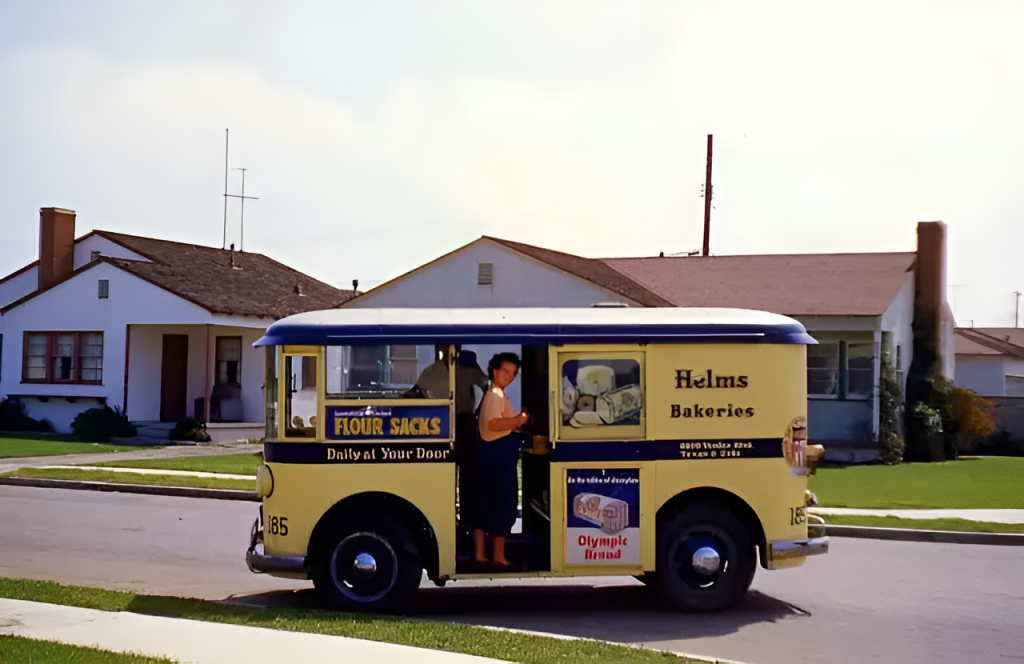
Helms Bakery was a family-owned business that operated from 1931 to 1969 in Southern California.
It was famous for its slogan “Daily at Your Door” and its delivery coaches that brought fresh bread, cake, donuts, and cookies to the neighborhoods.
Helms Bakery was also the official baker of the 1932 Summer Olympics in Los Angeles, and supplied bread for the U.S. teams in subsequent games.
For many people who grew up in the 1950s, the Helms Bakery delivery truck was a source of joy and nostalgia.
They would eagerly wait for the sound of the whistle that announced the arrival of the truck, and run out to buy their favorite treats.
The truck was designed with wooden drawers that displayed the goodies, and the driver would let the kids pick what they wanted.
The Helms Bakery delivery truck was a symbol of a simpler and sweeter time, when fresh baked goods were delivered right to your door.
The oldest McDonald’s still in operation (1953). Downey, CA
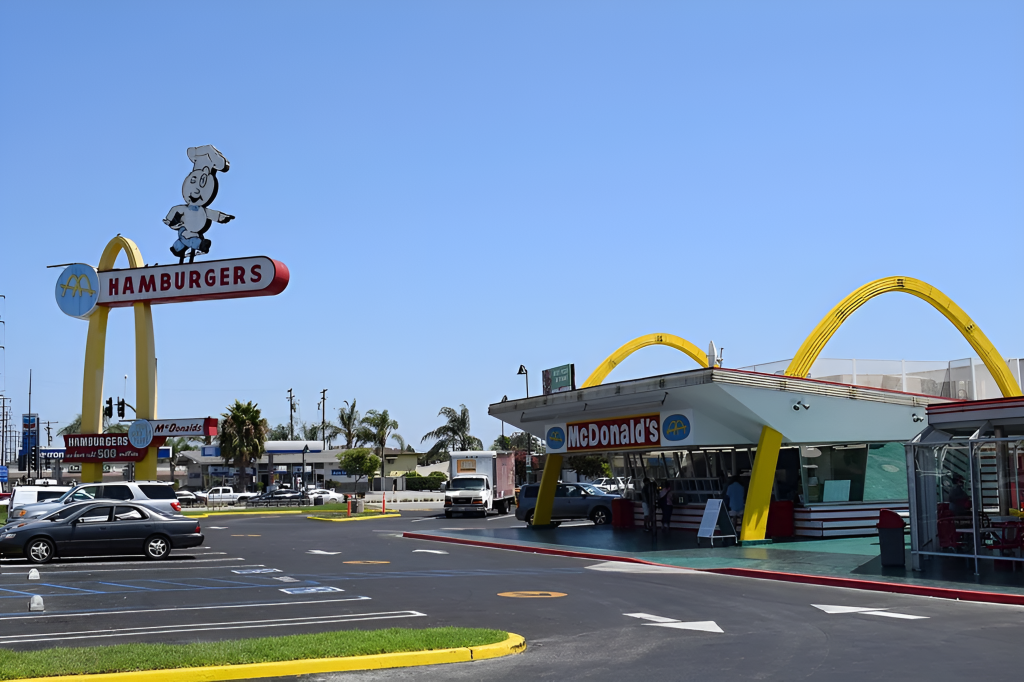
In the quiet suburban city of Downey, California, a piece of fast food history still stands tall – the oldest operating McDonald’s restaurant.
This unassuming hamburger stand opened its doors on August 18, 1953, becoming only the third McDonald’s location in existence.
It was franchised by the McDonald brothers themselves, well before the involvement of business magnate Ray Kroc who would later transform the company into a global juggernaut.
With its signature golden arches and walk-up service style, this humble eatery offered a glimpse into the pioneering vision of efficient, high-quality fast food that would revolutionize the restaurant industry. For decades, the Downey McDonald’s operated in peaceful anonymity, a beloved local gem.
However, its fortunes changed in the 1990s as the McDonald’s corporation modernized, leaving this vintage restaurant as the last of its kind.
Suddenly thrust into the spotlight, it faced the threat of demolition until public outcry demanded its preservation.
The National Trust for Historic Preservation named it one of the 11 Most Endangered Historic Places in 1994, spurring a two-year restoration effort.
What could have been yet another casualty of corporate expansion became an unlikely cultural icon – a vintage time capsule whisking customers back to the origins of one of America’s most recognized brands. Today, this architectural jewel from the golden age of drive-ins continues to serve up nostalgic charm and simple burgers to patrons young and old.
An adjacent museum offers fascinating insights into McDonald’s’ humble beginnings, while the original restaurant itself has been preserved in a state of ’50s time warp.
Stepping through its diner-style doors, one can almost envision a young Ray Kroc dreaming of a future fast food empire as he visits the McDonald brothers’ ingenious operation.
I remember the Helms bakery truck